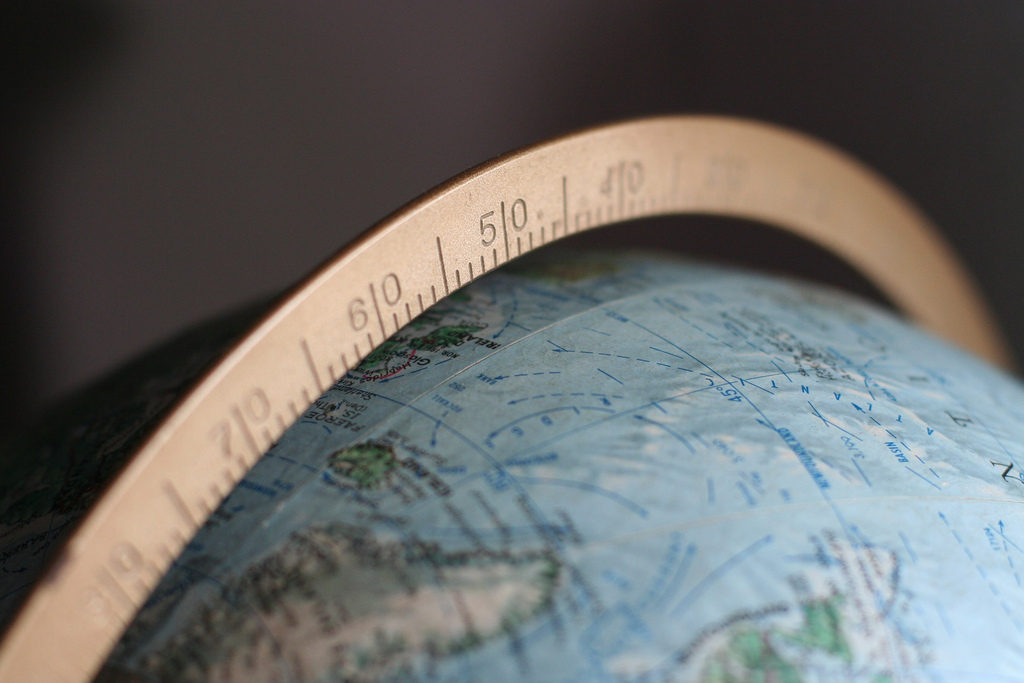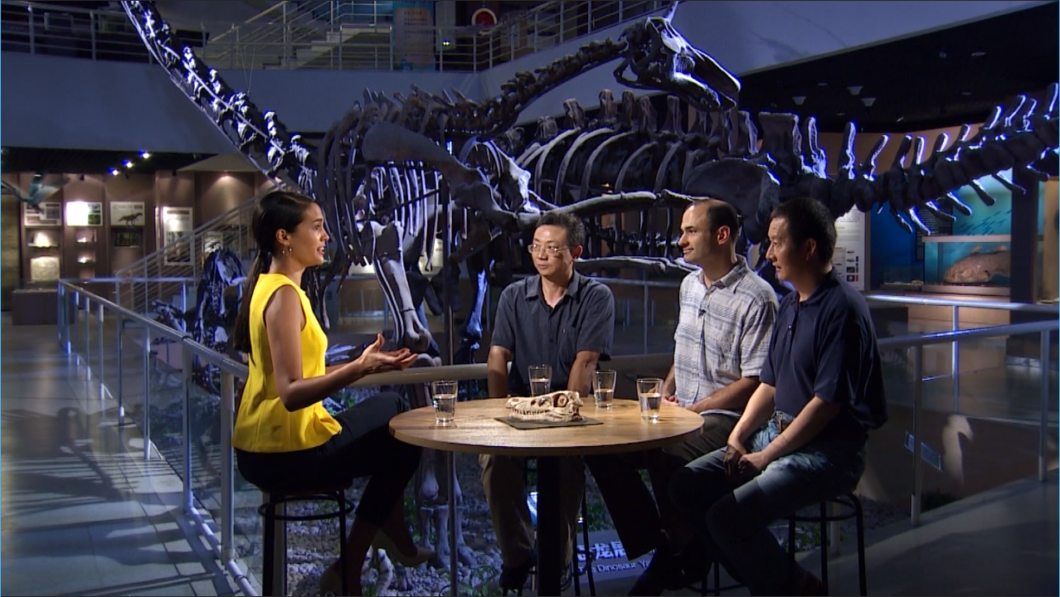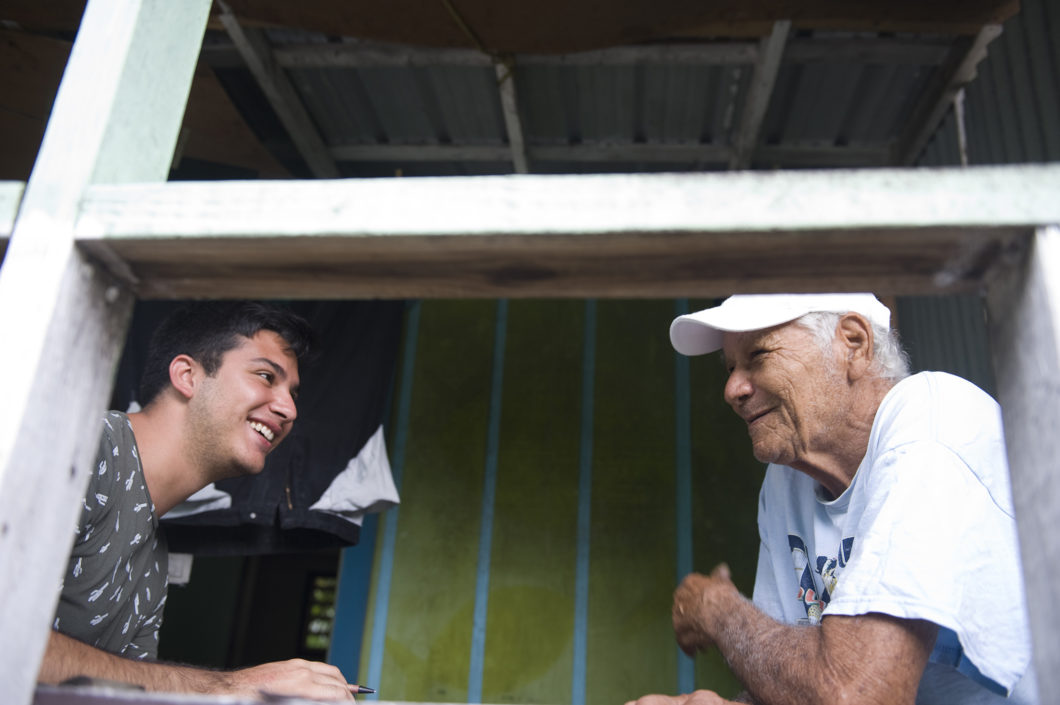
Some of the biggest science stories, from climate change to gene editing to infectious disease, are global stories. Journalists based outside the United States and Europe, where the majority of major science-journalism publications are based, are well-positioned to find and report these kinds of stories. When the Zika outbreak swept Brazil in 2015, for example, Brazilian journalists were the first to cover the event. But it can be a challenge to place those stories in U.S. and European publications that have large international audiences.
So why don’t foreign bylines more often appear in such publications? As an early-career Mexican science journalist, I have been asking myself that question for quite a while now. In a recent roundtable conversation conducted by email, I spoke with editors and freelance writers about the challenges writers face in working across international boundaries and how to break into U.S. and European publications.
The editors who participated in the conversation are:
Rich Stone, who oversees Science’s international news coverage.
Richard Van Noorden, the acting European bureau chief (based in London) at Nature.
Ochieng’ Ogodo, a Kenyan science journalist who coordinates correspondents and coverage from sub-Saharan Africa for SciDev.Net and has written for publications in Africa, the U.K., and the U.S.
The writers are:
Fatima Arkin, a Philippines-based journalist specializing in climate change, the environment, and health who has written for Foreign Policy, SciDev.Net, Devex, and others.
Emiliano Rodríguez Mega, a journalist from Mexico who covers research and science policy from Latin America for various publications, including Science, Scientific American, SciDev.Net, and Nature.
T.V. Padma, a science journalist based in India who writes for Nature, Nature India, New Scientist, Physics World, Chemistry World, BioWorld, and other outlets.
Rodrigo: Why do you think it’s often difficult for foreign journalists to break into U.S. and European publications?
Rich: You might think it’s a language barrier, but to me the sophistication of a journalist’s English is secondary to the ideas he or she is pitching. Writers who struggle to break into Science—foreign or U.S. based—often have a hard time weighing a story’s importance. For example, I’ll get a pitch about a personality conflict in the Chinese Academy of Sciences—possibly of huge interest inside China, but the story doesn’t have legs outside China.
Richard: One challenge for any journalist trying to pitch a local science or science-policy story to any overseas outlet is to put the story into an international context. Any editor will want a science story from somewhere across the world if the research is newsworthy, exciting, and internationally cutting-edge.
But too often I get pitches that don’t articulate that. Sometimes, for example, journalists haven’t asked anyone outside the research team how important the science is, or even googled to find out what else has been studied or written about in the area. European and U.S. writers commit these pitching errors too, of course—all the time—but they have the considerable advantage that their local European or U.S. editor may already tacitly understand the context they left out.
What matters is that a journalist can put their ideas across and articulate the importance of a story, not that they can write in fluent English. An editor can touch up copy if the reporting is solid and the story is good.
Ochieng’: One of the reasons [that it’s difficult to break into U.S. and European publications] is [that it’s challenging to persuade] editors in these countries that foreign journalists can write well [and] produce quality stories. I am aware of instances where some editors have ignored inquiries about contributions from people outside the U.S. or U.K.
There is also a preference from the editors for writers from the U.S. or U.K. [who are now] based in foreign countries, and not those who were born and brought up there, even though they may be much more conversant with these places.
Emiliano: Nature, Science, and SciDev.Net are all excellent examples of how some news organizations have tried to diversify their pool of freelance writers, which is great. But it’s just as easy to locate English-language publications that have not bothered to reach out to foreign journalists.
But foreign journalists are also to blame. I agree with Rich Stone in the sense that language doesn’t necessarily constitute a barrier. English is not my first language, and yet I’ve learned that as long as you can sell a good story, it doesn’t matter whether you have perfect grammar or not. But it is on us to think thoroughly about the angles that better fit the needs of our editors.
I would also say that a lot of reporters just don’t feel confident enough to send their pitches to a U.S./U.K. outlet. Fear of rejection can also be an important obstacle.
Rodrigo: Following up on Emiliano’s point about international journalists’ fear of rejection, how can editors go about encouraging more foreign journalists to pitch to them?
Richard: By spotting great work, asking trusted reporters who live/travel in a region for connections to other reporters there, and looking out for contacts at networking events, such as the World Conference of Science Journalists (WCSJ). [Editors’ note: The WCSJ2017 will take place October 26–30 in San Francisco, California.]
It does take a concerted effort, as it can be tricky to find good reporting in a foreign language [if you don’t speak that language]. Sometimes, traveling to a particular region is what’s needed.
Rich: Most editors are open to working with new writers from regions in which our news coverage is spotty or nonexistent. The challenge is establishing a connection. Editors tend to be busy. We get sucked into a lot of meetings, we’re editing stories, and on occasion exercising our own reporting and writing muscles. Most of the time I’m relying on writers to come to me with ideas. If a colleague or I spot a story that we’d like to cover, we’ll invariably assign it to someone we know.
Nevertheless, bringing new writers into our “stable” is rewarding and it enriches our pages. If writers (from anywhere in the world) want to break into Science or Nature or a similar publication, they should do their homework: have a sense of the kinds of stories we run and have adequately researched a pitch. Putting a name to a face of course can’t hurt, so I’ll be hoping to meet some promising writers at the next WCSJ meeting.

Rodrigo: Editors, given that many international pitches come from writers you haven’t met and whose work you may not be familiar with, what can foreign journalists do to earn your trust, when pitching for the first time?
Richard: Often, an editor wants to know more about a reporter’s previous experience and areas of interest before they can trust them with a commission. The first step to familiarity and building trust is as simple as a Skype conversation, with the reporter sending over a CV, some story clips, and a few ideas in advance. Editors can use that conversation to lay out what kind of stories their publication is interested in, and for what audience—plus what information they like to see in pitches—and reporters can bat around a few ideas and story approaches.
For an overseas reporter approaching an editor with a pitch out of the blue, don’t just pitch the story, but pitch yourself too. Attach a CV and clips together with your story pitch, and include an indication that although this story might not land, you are interested in contributing to that publication and would like to find time for a Skype conversation about what the editor is looking for from that region, and what they want from freelance reporters.
Rich: Personally, I prefer brief initial queries—a few sentences summarizing the idea. If it’s something we’ve already covered or have a writer working on, the person pitching can quickly take it to another publication or look for a new idea without investing too much time at the outset. If the query is promising, I’ll ask for more info and if it’s not in my area of expertise, circulate it to colleagues for feedback before making an assignment. Writers should not be dispirited by striking out on a pitch. Most of my best overseas writers struggled at the outset to identify good stories for Science before hitting their stride.
Rodrigo: Writers, how did you land your first U.S. or U.K. assignment? Did you simply send a cold pitch, or did you use other strategies, such as setting up a Skype introduction like Richard at Nature suggested?
Padma: No, I don’t use strategies such as Skype conversations or pitch myself along with a story. The pitches are in basic English, so English sophistication (to borrow Rich Stone’s phrase) as a language barrier is not really a huge obstacle.
I believe that one should not get fixated right from the beginning over whether one has broken into a U.K. or U.S. market or not. Enjoy your science writing first, and explore and decide what kind of science reporting is your forte.
Emiliano: For me, I feel like it was a combination of luck and strategy. Back in February 2015, I attended and reported on the AAAS conference in San Jose, California, thanks to an NASW Travel Fellowship. I had almost no experience in journalism (I majored in biology) and felt so out of place. But the Travel Fellowship is pretty amazing in the way that they assign each fellow an experienced mentor/editor. I got paired with Lizzie Wade, who is the Latin America correspondent for Science. After the conference, Lizzie really encouraged me to start writing for Science. And so, after months of hunting down possible stories and getting a few pitches rejected, I was able to land my first story in June [of 2015].
With Nature, I used a whole different approach. I had met Lauren Morello, Nature’s U.S. news editor, and had been meaning to pitch her a story. I pitched her a story about budget cuts in Argentina, along with my CV and some previous clips. The story wasn’t published there in the end, but that pitch helped me a lot afterwards, when Lauren passed on my contact to Richard Van Noorden, who assigned me a story about how Peru’s National Council of Science, Technology and [Technological] Innovation had cancelled its subscription to Elsevier/ScienceDirect. And that’s how I landed my first assignment in Nature.
So, to sum up: Network with colleagues, apply for fellowships, attend conferences (this is very important if you live in another country), find your own niche, practice your pitching abilities, do your homework, and be very strategic. And, as Padma said, just have fun in the process.
Fatima: My path was very random. I have no background in science. (I actually studied history and international development.) But, shortly after I moved to the Philippines [from Canada] I ran into one of SciDev.Net‘s coordinators in an elevator. We got to talking. One thing led to another and now I write consistently for him.
The SciDev.Net community is very supportive. After a while, my editor recommended me to other publications in the U.K. and the U.S. Today, I write regularly for several of them, with an emphasis on climate change and natural disasters.
That said, I do find it challenging to get ahold of editors that I don’t have a connection to. I’ll definitely try requesting a Skype call in the future. When I have met editors on occasion, I found that talking with them even for 5 or 10 minutes was infinitely more productive for both parties than sending countless emails. Email is not always the best medium of communication!

Rodrigo: Editors, what challenges have you had working with foreign journalists on stories and how did you address them?
Ochieng’: [One would be their] ability to present stories to an audience far removed from [their geographic] settings, in a manner that will elicit interest in them.
Lack of resources for in-depth reporting can also be a challenge. Whereas most journalists in the U.S./U.K. have the advantage of easy access to a number of resources much faster—such as reliable Internet—some journalists working in places like Africa find it hard to cope because of the lack of resources that would help them not only to hand in an assignment pretty quickly but also [allow for in-depth] research to give their pieces the depth and uniqueness that U.S./U.K. publications may require.
Rich: Most issues come down to a writer’s experience and familiarity with Science‘s style. On rare occasion I’ve encountered writers who are ardently nationalistic, and their first drafts tended to have boosterish comments and slogans. But even then we were able to work together to get stories into shape for publication.
The bottleneck for getting stories into the magazine from anywhere in the world is a dearth of enterprising and innovative story ideas. I can’t emphasize enough how important it is for writers to get out there and talk with people and turn over stones in search of good ideas.
And Skype chats between writers and editors at any stage of the working relationship—be it a get-to-know-you session or to brainstorm ideas—are a very good thing.
Richard: As Rich says, it largely comes down to a reporter’s experience, not where they’re reporting from.
One thing, though, that does crop up from time to time: It’s important to describe your country’s politics from the outside so that international readers can understand it. If I’m unfamiliar with the politics and history of a region, I’ll raise many more questions about basic points that you probably take for granted because you never have to explain them for domestic readers.
Padma: About how much background info should a reporter from a foreign country provide? This dilemma begins for me, as a reporter, at the pitching stage itself—sometimes I fear that in the process of adding the background-politics info, my pitch is beginning to look longer than a commissioned story would be. But if you want to explain why the news is important, you have to give this background info. Sometimes I try to shorten it, but it turns out the news editor wants to know precisely what you decided to leave out.
My query to the editors, therefore, is: Would you be put off by a long pitch that has all the background info?
Rich: No, but there are caveats. I discourage writers from investing too much time on an initial pitch, because the story might already be in our sights and all that effort on the pitch might be wasted, especially if [we don’t commission the story and] the writer can’t land an assignment elsewhere. True, the writer needs to invest enough time to know the story is real. Perhaps it’s best to see researching a pitch and writing a pitch as two very different tasks. All editors will expect a well-researched pitch, but the pitch itself may need to be tailored to an individual editor’s needs.
Rodrigo: Have you noticed differences in the way journalism is done in other countries compared to the way it’s done in the U.S. and U.K.? If so, in what ways have you had to adapt your approach to reporting, writing, or editing?
Rich: There are differences in style and substance in how journalists in various countries report news and write their stories. Bottom line at Science is this: If the story is solid and compelling, we’ll work patiently with a foreign writer, especially those who haven’t written for us before, to reshape a story into our style. The edits are demanding, and sometimes not much fun (even agonizing!) for the writer or editor—but most of the time, the end result is a story we are both proud of.
Emiliano: I would just say that journalism—good journalism—is the same (or at least very similar) in the U.S. and U.K. as it is in Mexico, the Philippines, India, or Kenya. I’ve had to adapt to the style of specific publications the same way that I adapt to the style of different Mexican outlets, for example.
Fatima: I agree with Emiliano. Good journalism speaks for itself. I’ve had to adapt to style and substance more as a result of the specific publication and the word limit stipulated by editors than due to where the publication is located.
Richard: I don’t see any important differences between the way good journalism is practiced in different countries.
Rodrigo: Have you ever encountered special logistical or administrative challenges, such as payment issues, when working with foreign journalists or outlets?
Padma: Just once, there was some to-and-froing of the payment between banks for the first occasion, as sometimes the bank abroad and your bank at home deal via an intermediary bank. But it eventually gets sorted out and is smooth sailing afterwards.
It helps if publications have an automated system of payment and do not insist on the reporter filing a fresh invoice each time. Most don’t, but a couple that I write for do.
Rich: From time to time, payments wired to a foreign bank account don’t go through—for trivial or sometimes unknown reasons—but I believe we’ve always resolved these issues. We do require writers to invoice for each story, which helps our administrative assistant and our finance office keep track of payments.
Fatima: I’ve had several payment delays. Personally, I prefer issuing an invoice for each article because it’s easier for me to track. Automatic payments are frustrating, particularly when there isn’t an accompanying invoice or a set time frame for when you can expect to receive the money. Some of my colleagues have had to wait five months for payment. It’s ridiculous.
Emiliano: Maybe the biggest challenge I’ve found being a foreign contributor is that my nationality forces me to work on a freelance basis for those outlets—which, don’t get me wrong, I truly love. But there have been at least two occasions when I applied to internships at U.S.-based outlets, was selected (or at least was one of the strongest applicants), and lost my opportunity to intern because I didn’t have a permit to work in the United States. It really sucks when you’re the right person to do the job and you still don’t get it because you were born somewhere else.

Rodrigo: Any final thoughts or advice you’d like to offer foreign writers or editors who work with them—or hope to?
Emiliano: Writers, if you want to break into U.S. and European publications, don’t be afraid to put yourselves out there. Yes, you will fail and your pitches will get rejected and it will take some time to figure things out. But you’re going to learn a lot in the process.
Editors, science stories are not only happening in your country. And the best people to tell them might not be American or native English speakers. So reach out to foreign reporters more frequently. If you don’t know any, just ask around. You might get pleasantly surprised.
Fatima: To foreign writers: I’ve found it helpful to reach out not just to editors but also to other journalists for advice. Although this industry is very competitive, in my experience, if people have the time, they’ll try to help you out. After all, we spend most of our professional life asking experts and sources to talk to us. We can spare a few moments to send an email or grab a cup of coffee to talk journalism.
To editors: I hope that you do reach out more to journalists in other parts of the world. Discussions like this roundtable are a great way to help us understand what you’re looking for and what kinds of topics you are interested in.
To everyone: I’d also like to see more cross-country collaboration. There are so many important science stories that could be better reported if journalists from the affected countries work together.
Rich: Our appetite for quality science journalism from the far corners of the globe remains healthy and I’m personally always on the lookout for great story ideas and new talent, no matter the writer’s nationality.
Richard: I’d encourage writers just to pitch their story ideas to overseas publications and see what reception and feedback they get. I’m proud of the many stories Nature published last year from reporters all over the world, and we are always looking for high-quality stories from new journalists reporting from under-covered regions. I expect, also, that most science editors would say the same; science is, after all, an international endeavor.

Rodrigo Pérez Ortega is a TON fellow sponsored by the Burroughs Wellcome Fund. He is a freelance science writer from Mexico City. He’s passionate about neuroscience and health journalism, and has been a contributor at Tec Review, Medscape en Español, ¿cómo ves?, and others. His work has been published in English and Spanish, and he works continuously to raise awareness about science and science journalism in Latin America. Follow him on Twitter @rpocisv.


